![Suzuki, Akio / Lawrence English: Boombana Echoes Fan [CD + PRINTS] (Winds Measure) Suzuki, Akio / Lawrence English: Boombana Echoes Fan [CD + PRINTS] (Winds Measure)](https://www.teuthida.com/productImages/misc4/23367.jpg)
Experimental sound performer Lawrence English on drums, electronics and field recordings joins forces with Akio Suzuki on the amazing analapos instrument (see video) for three tracks of unusual and alien sound, punctuated with strange references and percussive devices.
Out of Stock
Quantity in Basket: None
Log In to use our Wish List
Shipping Weight: 3.00 units
Sample The Album:
Akio Suzuki-analapos
Lawrence English-drums, electronics, field recordings
Click an artist name above to see in-stock items for that artist.
Edition of 100 CDs with accompanying prints. 2 color letterpress die cut sleeve. 3 letterpress printed inserts of drawings by Akio Suzuki
Label: Winds Measure
Catalog ID: wm31-2
Squidco Product Code: 23367
Format: CD
Condition: New
Released: 2015
Country: USA
Packaging: Cardstock foldover w/ Prints
Recorded live at 121, in Brisbane, Australia, in December, 2005.
Experimental sound performer Lawrence English on drums, electronics and field recordings joins forces with Akio Suzuki on the amazing analapos instrument (see video) for three tracks of unusual and alien sound, punctuated with strange references and percussive devices.
Edition of 100 CDs with accompanying prints. 2 color letterpress die cut sleeve. 3 letterpress printed inserts of drawings by Akio Suzuki
Artist Biographies
• Show Bio for Akio Suzuki "Akio Suzuki is known as a pioneer of sound art, but the breadth of his activities and the form of his works far exceeds the normal boundaries of sound art. It is perhaps more as a "quester after sound and space" that he has received the most attention from artists in many fields.Suzuki's journey as an artist began in 1963 with a performance at Nagoya station, in which he threw a bucket full of junk down a staircase. The inspiration behind this performance - the idea that if one were to hurl an object down a well-balanced stairway, a pleasant rhythm might be the result - took the desire to "listen" as its subject. That desire to hear, to listen has remained the one constant in Suzuki's stance as an artist. During the sixties, Suzuki's sense of playfulness led him to undertake a series of Self-Study Events, where he explored the processes of "throwing" and "following", taking the natural world as his collaborator. The experiences he gained in these events led him in the seventies to invent an echo instrument he named Analapos. The instrument's structure resembles that of two mirrors facing each other, reflecting into infinity. As an extension of the principles underlying Analapos, Suzuki constructed the Hinatabokko no kukan (Space in the Sun) in 1988. This space consists of two huge parallel walls, in between which the artist can sit all day and purify his hearing by listening to the reflected sounds of nature. This space leads the artist to discover a new method of listening. Suzuki himself comments, "Sound, which had been conceptually imprisoned in various spaces, is freed to circle the world." From the late seventies and through the eighties, Suzuki also developed a form of performance he refers to as Conceptual Soundwork. Applying a number of self-imposed, simple and austere rules, he uses objects close at hand in a mode of "intellectual play". While these events do on the one hand express a critique of meaningless improvised performance, at the same time Suzuki is constantly aware of the audience's process of listening and he attempts to create contemporaneous connections with the site of performance. It was around this time that Suzuki began to travel frequently to the US and Europe, and his performances at leading music festivals, Festival d'Automne (Paris, 1978) and Documenta 8 (Kassel, 1987) were rapturously received. As sound art enjoyed a period of prosperity in the nineties, Suzuki was given the chance to create many installations, particularly in Berlin. Worthy of special note were his soundless installations, such as Otodate (Echo point, 1996) in Berlin, Enghien-les-Bains (since 1997, http://www.insitu-enghien.org/) and Strasbourg; Hana (Flower, 1997) at the Stadtgalarie Saarbrucken; and Pyramid (1999) which involved people excavating sounds. These soundless pieces were not designed to critique the old perceptual theories of music, rather they questioned the very location of music. Through their encounter with these works, the past experiences and memories of viewers were reconstructed as new experiences. This process was fundamental to the action of "listening" to the works. From the late seventies and through the eighties, Suzuki also developed a form of performance he refers to as Conceptual Soundwork. Applying a number of self-imposed, simple and austere rules, he uses objects close at hand in a mode of "intellectual play". While these events do on the one hand express a critique of meaningless improvised performance, at the same time Suzuki is constantly aware of the audience's process of listening and he attempts to create contemporaneous connections with the site of performance. It was around this time that Suzuki began to travel frequently to the US and Europe, and his performances at leading music festivals, Festival d'Automne (Paris, 1978) and Documenta 8 (Kassel, 1987) were rapturously received. As sound art enjoyed a period of prosperity in the nineties, Suzuki was given the chance to create many installations, particularly in Berlin. Worthy of special note were his soundless installations, such as Otodate (Echo point, 1996) in Berlin, Enghien-les-Bains (since 1997, http://www.insitu-enghien.org/) and Strasbourg; Hana (Flower, 1997) at the Stadtgalarie Saarbrucken; and Pyramid (1999) which involved people excavating sounds. These soundless pieces were not designed to critique the old perceptual theories of music, rather they questioned the very location of music. Through their encounter with these works, the past experiences and memories of viewers were reconstructed as new experiences. This process was fundamental to the action of "listening" to the works." ^ Hide Bio for Akio Suzuki • Show Bio for Lawrence English "Lawrence English is composer, media artist and curator based in Australia. Working across an eclectic array of aesthetic investigations, English's work prompts questions of field, perception and memory. He investigates the politics of perception, through live performance and installation, to create works that ponder subtle transformations of space and ask audiences to become aware of that which exists at the edge of perception." ^ Hide Bio for Lawrence English
7/9/2025
Have a better biography or biography source? Please Contact Us so that we can update this biography.
7/9/2025
Have a better biography or biography source? Please Contact Us so that we can update this biography.
Track Listing:
1. Ficus Watkinsiana 6:22
2. Manorina Melanophrys 8:46
3. Eucalyptus Signata 5:05
Book
Electro-Acoustic
Sound, Noise, &c.
Field Recordings
Duo Recordings
Staff Picks & Recommended Items
New in Experimental & Electronic Music
Staff Picks & Recommended Items
Australian Improvisers, Composers and Experimenters
Search for other titles on the label:
Winds Measure.


![Suzuki, Akio / Lawrence English: Boombana Echoes Fan [CD + PRINTS] (Winds Measure) Suzuki, Akio / Lawrence English: Boombana Echoes Fan [CD + PRINTS] (Winds Measure)](https://www.teuthida.com/productImages/full/23367.Full.jpg)



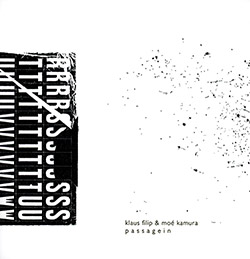
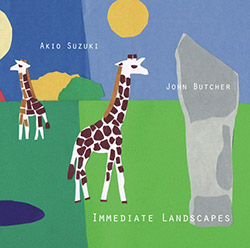

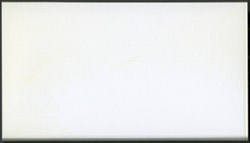


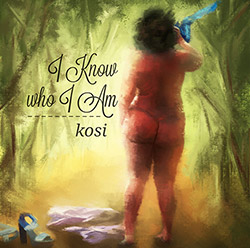


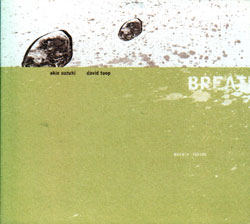
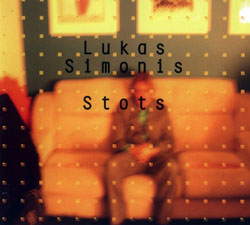



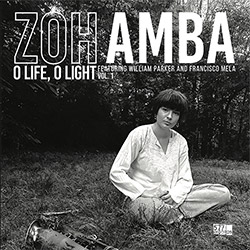











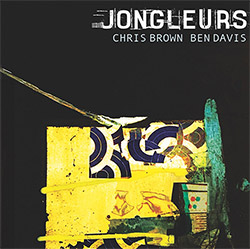
![BlueRing Improvisers: Materia [2 CDs]](https://www.teuthida.com/productImages/misc4/36513.jpg)




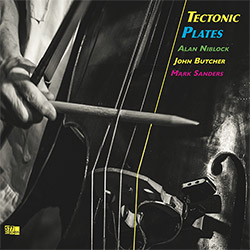


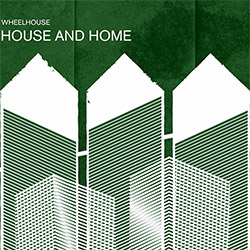
![Wheelhouse (Rempis / Adasiewicz / McBride): House And Home [VINYL]](https://www.teuthida.com/productImages/misc4/36462.jpg)
![+DOG+: The Light Of Our Lives [2 CDs]](https://www.teuthida.com/productImages/misc4/36009.jpg)


![Parker, Evan / Jean-Marc Foussat: Insolence [VINYL]](https://www.teuthida.com/productImages/misc4/36398.jpg)










![Deupree, Jerome / Sylvie Courvoisier / Lester St. Louis / Joe Morris: Canyon [2 CDs]](https://www.teuthida.com/productImages/misc4/36404.jpg)



![Eventless Plot | Haarvol: The Subliminal Paths [CASSETTE + DOWNLOAD]](https://www.teuthida.com/productImages/misc4/36232.jpg)










![Eventless Plot | Francesco Covarino: Methexis [CASSETTE + DOWNLOAD]](https://www.teuthida.com/productImages/misc4/36231.jpg)



![Das B (Mazen Kerbaj / Mike Majkowski / Magda Mayas / Tony Buck): Love [VINYL]](https://www.teuthida.com/productImages/misc4/36329.jpg)


![Eternities: Rides Again [CASSETTE]](https://www.teuthida.com/productImages/misc4/36247.jpg)
![Lopez, Francisco: Untitled (2021-2022) [2 CDs]](https://www.teuthida.com/productImages/misc4/36438.jpg)






![Money : Money 2 [2 CDs]](https://www.teuthida.com/productImages/misc4/35894.jpg)




![Klinga, Erik: Elusive Shimmer [VINYL]](https://www.teuthida.com/productImages/misc4/36258.jpg)
![CHANGES TO blind (Phil Zampino): Volume 9 - I Wave on a Fine Vile Mist [CD + DOWNLOAD]](https://www.teuthida.com/productImages/misc4/36061.jpg)

![Wallmart / Rubbish: Asset Protection [split CD]](https://www.teuthida.com/productImages/misc4/35900.jpg)


![+Dog+: The Family Music Book Vol. 5 [2 CDs]](https://www.teuthida.com/productImages/misc4/35897.jpg)
![Kuvveti, Deli : Kuslar Soyledi [CASSETTE w/ DOWNLOAD]](https://www.teuthida.com/productImages/misc4/36107.jpg)

![Brown, Dan / Dan Reynolds: Live At The Grange Hall [unauthorized][CASSETTE]](https://www.teuthida.com/productImages/misc4/36245.jpg)








![Palestine, Charlemagne / Seppe Gebruers: Beyondddddd The Notessssss [VINYL]](https://www.teuthida.com/productImages/misc4/36206.jpg)
![Palestine, Charlemagne / Seppe Gebruers: Beyondddddd The Notessssss [NEON GREEN VINYL]](https://www.teuthida.com/productImages/misc4/36207.jpg)

![Laubrock, Ingrid: Purposing The Air [2 CDs]](https://www.teuthida.com/productImages/misc4/35639.jpg)

![Yoko, Ono / The Great Learning Orchestra: Selected Recordings From Grapefruit [2 CDs]](https://www.teuthida.com/productImages/misc4/35841.jpg)









![Zorn, John / JACK Quartet: The Complete String Quartets [2 CDs]](https://www.teuthida.com/productImages/misc4/35609.jpg)

![Lonsdale, Eden: Dawnings [2 CDs]](https://www.teuthida.com/productImages/misc4/35480.jpg)



![Sorry For Laughing (G. Whitlow / M. Bates / Dave-Id / E. Ka-Spel): Rain Flowers [2 CDS]](https://www.teuthida.com/productImages/misc4/35985.jpg)

![Rolando, Tommaso / Andy Moor : Biscotti [CASSETTE w/ DOWNLOADS]](https://www.teuthida.com/productImages/misc4/36106.jpg)


![Electric Bird Noise / Derek Roddy: 8-10-22 [CD EP]](https://www.teuthida.com/productImages/misc4/35970.jpg)








![Elephant9 : Mythical River [VINYL]](https://www.teuthida.com/productImages/misc4/34624.jpg)



![Elephant9 with Terje Rypdal: Catching Fire [VINYL 2 LPs]](https://www.teuthida.com/productImages/misc4/35355.jpg)
![Deerlady (Obomsawin, Mali / Magdalena Abrego): Greatest Hits [VINYL]](https://www.teuthida.com/productImages/misc4/34876.jpg)







![Surplus 1980: Illusion of Consistency [CD]](https://www.teuthida.com/productImages/misc4/35069.jpg)
![Staiano, Moe: Away Towards the Light [VINYL + DOWNLOAD]](https://www.teuthida.com/productImages/misc4/35037.jpg)
![Coley, Byron: Dating Tips for Touring Bands [VINYL]](https://www.teuthida.com/productImages/misc4/17906.jpg)

![Lost Kisses: My Life is Sad & Funny [DVD]](https://www.teuthida.com/productImages/misc4/lostKissesDVD.jpg)